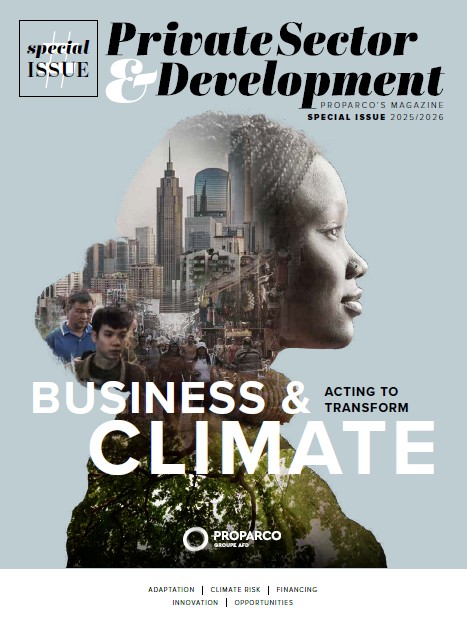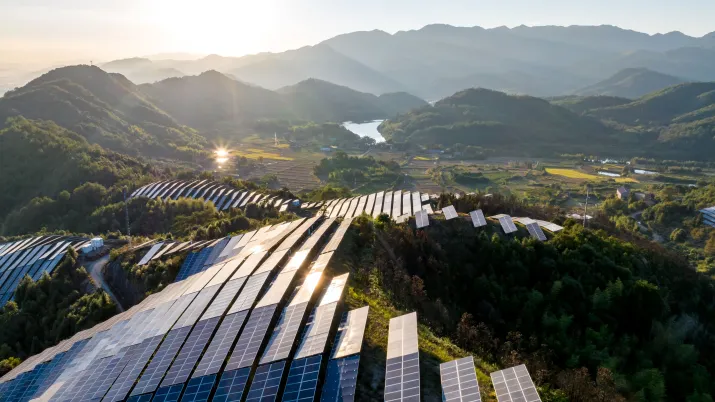Share the page
E-mobility: using debt to scale up
Published on


Private Sector & Development - Business & Climate: Acting to transform
Proparco has published a new edition of its Private Sector & Development magazine, focusing on the strategic role of the private sector and financial institutions in tackling the climate emergency.
Scaling up the electric mobility sector requires the use of debt financing. This is the message conveyed by three representatives of major investors in vehicle decarbonisation in Africa, India and Latin America.
The major shift towards electric mobility and the resulting massive decarbonisation cannot be financed by equity alone. This view is shared by many players in the sector around the world, starting with Nijhad Jamal, Managing Partner at Equator VC, a venture capital firm that invests in African tech start-ups. “We need specialist finance to come in and do working capital and inventory finance”, explains Jamal, whose company was one of the first investors in Roam Electric, a pioneering African electric motorcycle company based in Kenya. “We need banks and non-bank financial institutions to unlock local currency debt for consumer finance [loans, leases with a purchase option, subscriptions, pay-as-you-go, etc.).” To scale up the e-mobility sector, debt must also be used to finance the cost of battery production and the recharging infrastructure, and to provide subsidies and technical assistance for innovation and the development of new markets.
Those investing in the e-mobility sector face numerous challenges. Felipe Pinto is Managing Partner at Patria, Latin America’s leading independent asset manager, which has decided to invest in the ‘very solid fundamentals’ of e-mobility, particularly in the market for trucks and vans making urban deliveries in a number of Latin American countries. After a promising launch phase, the question of scaling up arises. You need to “create a new sector, and therefore develop the ecosystem, the value chain and the supply chain. But doing this entirely with your own funds is impossible.”
The example of Battery Smart in India
An yet the potential benefits are considerable: Souleymane Ba, Partner at Leapfrog Investments, testifies to the strategic importance of the sector. In India, Leapfrog has invested in Battery Smart, India’s largest provider of self-service batteries for two- and three-wheeled electric vehicles, offering drivers convenient, inexpensive and low-carbon mobility. This is of key importance in a country where carbon emissions from these vehicles comprise up to 30% of total transport emissions.
“Why did we invest in the e-mobility sector?” remarks Souleymane. “Everything we do must first have a positive climate impact. But we also need to ask whether the product actually saves the end customer money? As a shareholder, will you make any money? And the final criterion is the structuring of the transaction: will we be able to exit the investment and get a decent return?” Since it was launched in 2020, Battery Smart has reached approximately 45,000 users through a network of 1,000 battery exchange stations in 30 cities across India, with 120,000 batteries in circulation.
A success story made possible thanks to the support of Leapfrog. However, in other contexts where equity is not enough, raising debt from private sources can be an uphill battle. Nijhad Jama explains that this is particularly true “in many African markets where banks generate much higher margins by lending to the government rather than to the private sector. The demand is there. The technology is there. Margins are becoming decent. The different players in the value chain are coming together and collaborating. All that’s missing is non-equity capital to hold together the different parts of the model.” Debt is indeed the vector needed to scale up e-mobility.
Decoding
Sustainable finance in action: when financial players transform their business model
To bolster their action in favour of climate change mitigation and adaptation to its adverse effects, financial institutions are reorganising. They are rethinking their processes, products and conditi...
Published on November 20 2025




